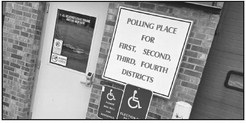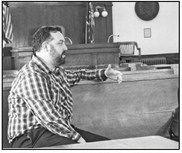Tying unemployment benefits to economic conditions makes sense
Assembly Bill 937 is destined to die with the governor’s veto pen.
The bill is part of a flurry of legislation being passed by the Republicancontrolled state legislature in an election-year effort to show they have actually done something other than sitting on their hands and complaining about Gov. Tony Evers’ handling of the COVID-19 pandemic in the state.
In recent months, the legislature has passed a number of, at best, marginal bills more for the purpose of political pandering than actually attempting to bring about any real world solutions.
It is unfortunate that AB 937 is part of this group, because the underlying idea of tying the length of time of unemployment compensation eligibility to economic conditions makes sense.
Current law sets regular unemployment benefit eligibility at up to 26 weeks. Unemployment compensation is the primary economic safety net for workers in the state. Private employers pay into the unemployment pool which in turn funds the benefits received by those who qualify for them.
One of the criticisms of the current unemployment system is the perception that there are those who are adept at “milking the system” and who, rather than undertaking a true job search, simply go through the motions while enjoying what is essentially a half-year vacation.
Given the state’s tight labor market, the reality is that most people who find themselves unemployed are able to find a job within a reasonably short amount of time. Things become trickier in more skilled positions where there may only ever be a limited number of openings which are not necessarily reflected in the overall labor statistics.
For example, at the beginning of the pandemic hair salons were among the businesses that were shut down. The licensed stylists and beauticians were unemployed. Expecting these skilled workers to pivot into general laborer jobs for what was known would be a short-term layoff would not make sense.
AB 937 uses unemployment rate as the key indicator to determine the length of time for unemployment benefits. Under the bill, given the current rates the maximum time of unemployment benefits would be 14 weeks with the period gradually going up to a maximum of 26 weeks of benefits if the unemployment rate went up to 9% across the state.
Tying benefit length of time to economic health makes sense, where the bill falls down is using unemployment rates as the only economic indicator. The challenge of tying unemployment benefits to the unemployment rate is that employment has historically been a lagging indicator of economic health.
Economic downturns could slow down onboarding of new staff even without seeing a spike in unemployment.
While AB 937 is unlikely to become law anytime soon, the idea behind it is a good one that should be incorporated in future bipartisan reforms of the unemployment compensation system.




